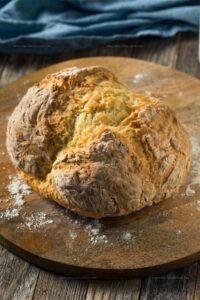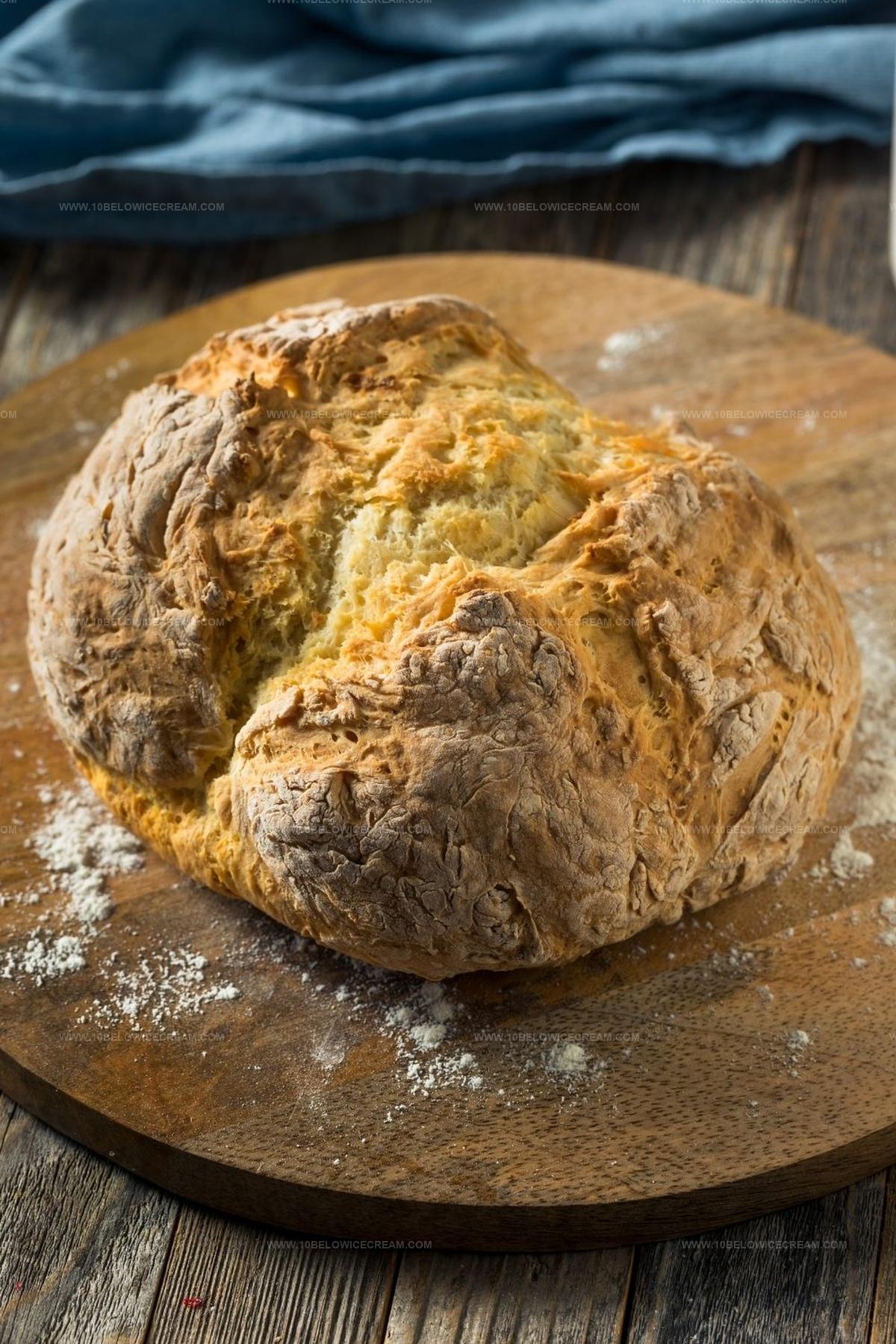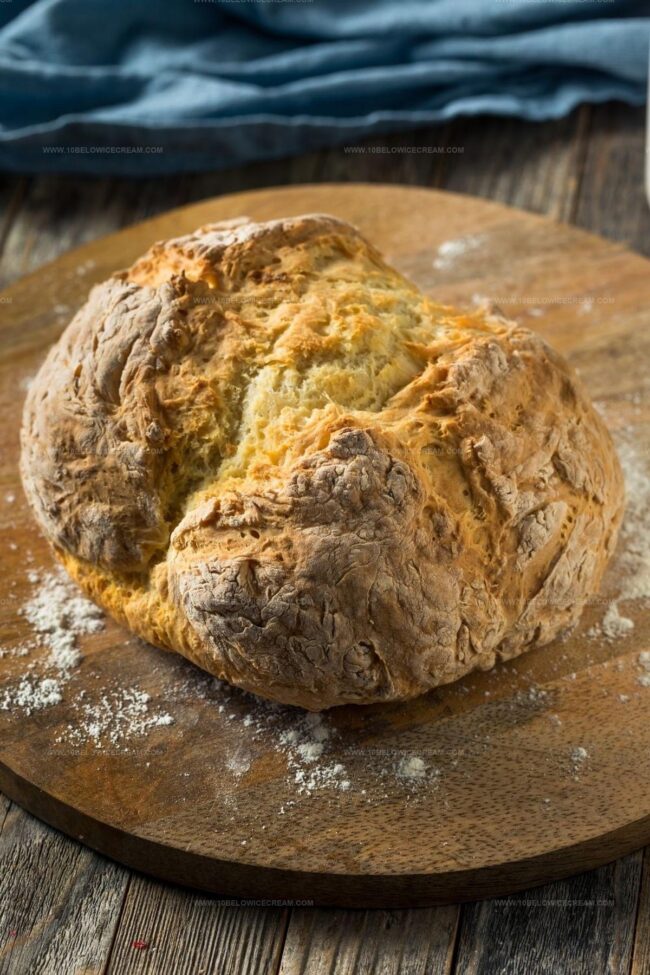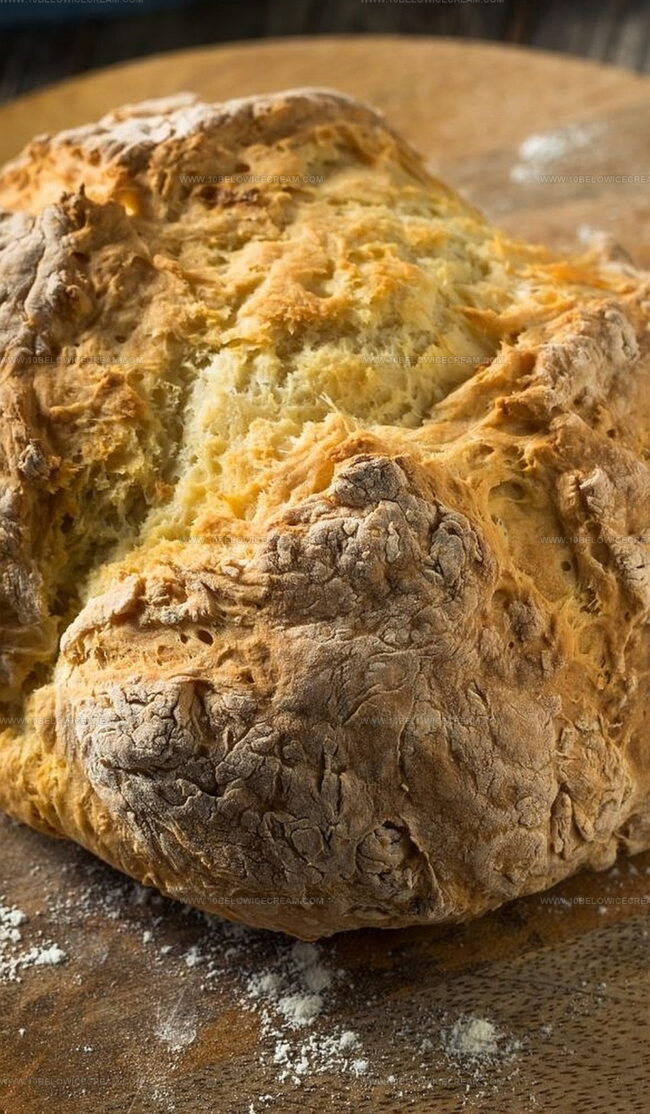Rustic Irish Soda Bread Recipe: Simple Joy From Your Oven
Crafting a hearty soda bread in your kitchen feels like wrapping yourself in a warm Irish blanket.
Generations of bakers have perfected this simple yet delicious recipe.
Flour, buttermilk, and baking soda create magic with minimal effort.
Rustic and dense, each slice carries the comfort of traditional baking.
Crisp exterior gives way to a soft, tender crumb that melts in you.
Fragrant and wholesome, this bread transforms an ordinary meal into something special.
Let’s bake a loaf that connects you to centuries of culinary tradition.
Why James Martin Soda Bread Is Quick And Tasty
What You’ll Need For James Martin Soda Bread
Dry Ingredients:Liquid Ingredient:Preparation Ingredients:Easy Steps To Make James Martin Soda Bread
Step 1: Prepare the Oven
Heat the oven to 450°F with the rack positioned in the center. This high temperature will help create a crispy exterior for the bread.
Step 2: Mix Dry Ingredients
Grab a large mixing bowl and combine:Whisk these ingredients together until they’re evenly distributed.
Step 3: Create the Dough
Make a small well in the center of the dry ingredients. Pour buttermilk into this well. Gently stir with a fork, gradually incorporating the flour mixture into the buttermilk. The goal is to create a soft, shaggy dough.
Step 4: Shape the Bread
Use your hands to softly gather the dough. Don’t overwork it – just bring the ingredients together until they form a cohesive ball. The dough should be slightly sticky but manageable.
Step 5: Form the Loaf
Transfer the dough to a lightly floured surface. Shape it into a round loaf about 6 inches wide and 1½ inches thick. The shape doesn’t need to be perfect – rustic is beautiful!
Step 6: Prepare for Baking
Place the dough in a cast-iron skillet or Dutch oven. Using a sharp knife, cut a deep cross (x) on the top of the loaf. This helps the bread cook evenly and gives it a classic Irish soda bread look.
Step 7: Bake the Bread
Put the bread in the oven. Bake at 450°F for 10 minutes, then reduce the temperature to 400°F. Continue baking for an additional 20 minutes. The bread is done when it has a deep golden crust and sounds hollow when tapped on the bottom.
Step 8: Cool and Serve
Remove the bread from the oven and transfer to a cooling rack. Let it rest for at least 30 minutes before slicing. Enjoy with butter, jam, or alongside a hearty soup.
Tips For Perfect James Martin Soda Bread
Creative Twists For James Martin Soda Bread
What Goes Well With James Martin Soda Bread
How To Store James Martin Soda Bread Properly
FAQ Section For James Martin Soda Bread
A traditional Irish quick bread made with just four ingredients: flour, baking soda, salt, and buttermilk, which doesn’t require yeast or rising time.
The x helps the bread cook evenly and allows steam to escape during baking, creating a classic cross-shaped design that also helps the bread split into quarters.
Baking soda reacts with the acidic buttermilk, creating carbon dioxide bubbles that cause the bread to rise and become light and fluffy.
You can create a buttermilk substitute by mixing regular milk with lemon juice or vinegar and letting it sit for 5-10 minutes before using in the recipe.
Print
Soda Bread Recipe
- Total Time: 45 minutes
- Yield: 4 1x
Description
Irish Soda Bread brings rustic charm straight from emerald landscapes to kitchen tables. Wholesome ingredients blend into a simple yet hearty loaf that connects generations with warm, comforting slices perfect for sharing.
Ingredients
Main Ingredients:
- 2 cups (480 milliliters) all-purpose flour
- 1 cup (240 milliliters) buttermilk
Leavening and Seasoning:
- 1/2 teaspoon baking soda
- 1/2 teaspoon salt
Instructions
- Prepare oven at 450°F, positioning rack centrally for optimal heat distribution.
- In a large mixing bowl, thoroughly blend dry ingredients, ensuring even mixture.
- Form a central depression in the dry ingredient mixture, creating a natural reservoir for buttermilk.
- Gradually incorporate buttermilk into the dry ingredients, using a fork to merge components until a thick, cohesive batter develops.
- Transition from fork to hands, gently transforming batter into a soft dough, carefully integrating remaining flour without excessive manipulation.
- Transfer dough to a floured surface, delicately shaping into a compact round approximately 6 inches wide and 1½ inches thick.
- Carefully place dough into a preheated cast-iron pan or Dutch oven, preparing for baking.
- Utilize a sharp knife to carve a distinctive cross pattern across the dough’s surface, allowing steam escape and promoting even baking.
- Initiate baking at 450°F for 10 minutes, then reduce temperature to 400°F, continuing baking for an additional 20 minutes.
- Confirm doneness by observing a deep golden exterior and firm internal texture.
- Remove from oven and transfer to a cooling rack, allowing bread to rest and stabilize before serving.
Notes
- Use freshly sourced buttermilk for the most authentic and rich flavor profile in your soda bread.
- Minimal handling of the dough ensures a tender, light texture without developing tough gluten strands.
- Scoring a deep cross on top helps steam escape and promotes even baking, creating that classic Irish bread appearance.
- For gluten-free variations, substitute all-purpose flour with a blend of gluten-free flour mix and add xanthan gum to improve texture and binding.
- Prep Time: 15 minutes
- Cook Time: 30 minutes
- Category: Breakfast, Lunch, Dinner, Snacks
- Method: Baking
- Cuisine: Irish
Nutrition
- Serving Size: 4
- Calories: 220 kcal
- Sugar: 2 g
- Sodium: 400 mg
- Fat: 2 g
- Saturated Fat: 1 g
- Unsaturated Fat: 1 g
- Trans Fat: 0 g
- Carbohydrates: 44 g
- Fiber: 2 g
- Protein: 7 g
- Cholesterol: 10 mg






Jackson Reid
Founder & Recipe Developer
Expertise
Education
Holyoke Community College – HCC-MGM Culinary Arts Institute
Certificate in Culinary Arts
Focus: Farm-to-table cuisine, sustainable cooking practices, and hands-on kitchen training
Jackson’s love for cooking began one dish at a time. After earning his Culinary Arts Certificate from Holyoke Community College’s HCC-MGM Culinary Arts Institute, he focused on what mattered most: creating recipes that are simple to follow and full of flavor.
At 10 Below Ice Cream, Jackson brings together global influences and a less-is-more approach. His recipes reflect his belief that good food doesn’t need to be complicated; it just needs to make sense, taste great, and feel right.
When he’s not testing ingredients or adjusting seasonings, you’ll find him hiking near Asheville, exploring local markets, or chasing the best light for food photos.